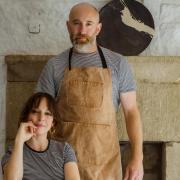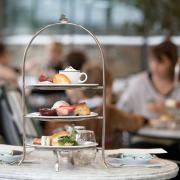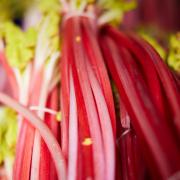The humble egg has proved itself a hero of the food chain with hens now sought-after pets. We

They say that, in times of crisis, you find out what matters most. And, as the coronavirus pandemic provoked panic buying throughout the nation’s supermarkets, it seemed what mattered most was pasta, toilet roll, tinned tomatoes, bread and eggs. The idea of running out of any of them was, frankly, worrying. For many of us, it was the first time we’d given much thought to the supply chain – how did those tinned tomatoes come to be on that supermarket shelf? And how long would it take for more to arrive? The same can’t really be said for eggs, as hen welfare and the egg farming industry have been under scrutiny for years. We’re used to seeing the terms ‘free range’, ‘organic’ and even ‘happy’ on our egg boxes, suggesting our eggs all come from hens living the loveliest of lives.
However, hen welfare is a complex issue, as Jane Howorth MBE, who founded the British Hen Welfare Trust (BHWT) 15 years ago, explains. ‘There’s still a lack of understanding about the different commercial systems and what caged, barn, free-range or organic eggs actually mean for the hen herself. People are surprised to learn that millions of hens are still kept in colony cages in the UK and that barn hens do not have access to outdoor space. We try to educate the public about what they are buying and how they can influence hen welfare by choosing only free-range eggs.
‘Welfare varies hugely from farm to farm but, as a general rule, the smaller the flock, the higher the welfare. Small, free-range farms should be able to offer more space so hens can practice their natural behaviours and don’t have to compete for access to food and water.’
Another key part of the charity’s work is rehoming ex-commercial laying hens. They can live for up to ten years, but are generally turned out of farms and sent to be slaughtered after about 18 months, when they are less profitable. The BHWT holds hundreds of rehoming days throughout the year at sites across the country. ‘Every year we rehome around 65,000 hens,’ says Jane. ‘At each rehoming day we will send between 200 and 350 hens on their way to their free-range retirement.’ In Yorkshire alone, in the past decade, the charity has found new homes for more than 23,000 hens.

‘We spend a lot of time promoting the benefits of keeping hens as pets,’ says Jane. ‘They’re like cats and dogs, but with feathers – just as loveable and full of character, and so resilient. I currently have eight hens and I don’t think there’s anything more relaxing than sitting in the garden and watching my girls pottering around in the sunshine. And, of course, many hens continue laying after their commercial life, which means fresh eggs for breakfast!’
Sally Taylor runs BHWT rehoming days from her home near York. On the day, a team of local volunteers collect the hens from farms in the area and bring them to her property, where they are then collected by rehomers. She says: ‘My family has had such joy from rehoming hens and we wanted to help others enjoy the company of these wonderful creatures. We don’t live on a farm, but somehow we have managed to make the rehoming work really well. Sharing the wonder and anticipation with the rehomers who arrive at our door has been one of the most wonderful experiences of our lives.’
Rehomer Julie Davis, from Newton upon Derwent, near York, has been adopting hens from the BHWT for 10 years, and recently added eight more to her brood. ‘I’m not a crazy chicken lady!’ she insists. ‘It’s nice to do a good thing for the hens, but it’s also completely selfish, because we love having them. It’s like with dogs – why would you buy a new puppy when you could rehome a dog? We say the new hens arrive with no clothes on because they’re often quite bald with pale faces and combs, so you can hardly believe how well they recover. It’ll only be a few weeks before they’re in full feather with bright red combs.’
Julie is an expert baker and credits her girls’ eggs with much of her culinary success. ‘The eggs are bigger, have more flavour and are less watery than supermarket eggs, which makes for lighter cakes. And you can see the yolks from the moon!’ Any excess eggs are enthusiastically received by friends and neighbours, who wait at the bottom of Julie’s drive to pick up fresh boxes, complete with homemade labels stating they’ve been laid by ‘The Girls’. ‘We’ve tried fancy breeds like Buff Orpingtons over the years, but just find these former supermarket girls really reliable egg layers.’

Another local rehomer, Julie Eccleston, from Boltby near Thirsk, adopted her first hens from the BHWT in 2013. ‘I like the fact that they are adult and already laying eggs,’ she says. ‘We haven’t had to buy an egg for 11 years. Hens are such good fun, and all of mine have names. The BHWT girls I presently have are called Renée (sadly Renato died), Hiawatha and Pocahontas, and I have just collected Ophelia and Cordelia at the most recent rehoming day. In 2011, one of my hens, Bad Betty, had an affair with Ike the cockerel while we were on holiday. A week after we returned, she was found hatching 18 eggs under my neighbour’s window. I still have two of her chicks.’
Looking to the future, the BHWT plans to open a hen welfare and education centre at its Devon headquarters, as well as rolling out a range of hen-keeping courses. ‘We have big plans to research the therapeutic benefits of keeping hens as pets so that we can help people understand just how brilliant these animals are,’ says Jane. ‘We’ve saved more than 750,000 of them from slaughter… and counting!’
Visit bhwt.org.uk for more information about the British Hen Welfare Trust and how you can get involved.



























